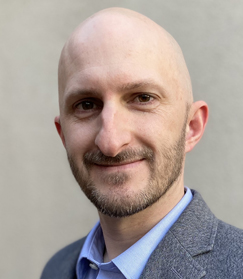RO-ILS Practice Interview
 John Ready, PhD, DABRMedical PhysicistSutter Medical Foundation Sacramento, CA RO-ILS Enrolled July 2016 |
What has your practice learned through RO-ILS?
One of the things that attracted me to Sutter Medical Foundation was its outstanding reputation for providing quality care to patients. In particular, the physics group was well regarded; a field service engineer once told me, “They just do things right.” Even with solid quality and safety practices in place, RO-ILS has allowed us to identify areas for improvement constantly. It has continued to amaze us how complex the radiation therapy processes can be in an extensive practice spread across multiple geographic locations. Whenever we feel like we have a piece of the process “locked-in” and standardized, some new scenario or event pops up that we had never encountered before, ultimately leading to an improved process.
What effects have you seen at your practice thanks to RO-ILS participation?
As our team has adopted and participated more in the RO-ILS event submission process, our team has become more cohesive and higher-performing. There has been a psychological shift over the past few years because of our RO-ILS participation.
As RO-ILS was being rolled out within the practice, there was a palpable hesitancy amongst the staff that event submissions could be used in a disciplinary manner against involved staff members. Additionally, there was a feeling that submitting a report to RO-ILS was a way to “get someone in trouble.” We even heard stories of staff-to-staff interactions along the lines of “you need to fix this, or I will report you to RO-ILS” as if it was a threat carrying consequences.
Through education, openness and transparency in handling RO-ILS cases, these perceptions have become a thing of the past. The number of submissions has increased, and staff have verbalized that while initially concerned with reporting events, they have come to value RO-ILS as a tool for process improvement and to make suggestions in the interest of better patient care. Amy Edmondson observed that good teams don’t make more mistakes; they report more.
What tips would you offer a practice trying to invigorate RO-ILS participation?
Don’t expect that you can flip on the RO-ILS switch and realize instant success. Our incident learning and reporting program continues to evolve as we learn more about handling events and how to ensure we are learning, improving and engaging staff along the way.
Some elements of our incident learning program include:
- Daily huddles always start with a safety discussion.
- RO-ILS “Case of the Week” emails highlighting case studies published by RO-HAC or reviewing our own internal events. Team meetings provide an opportunity for a deep dive into the cases of the week.
- Monthly event reviews with our multidisciplinary incident learning team.
- Monthly summary sent to each physician listing RO-ILS events that may have involved their patients.
- Monthly Good Catch Award,* the recipient earning possession of a large trophy to keep at their workstation for the month.
- Annual online RO-ILS program refresher training for all staff.
- Annual Gold Glove Award for the good catch voted most impactful by our physician leadership team.
*Thanking and acknowledging staff for identifying errors is a recommended best practice of the Joint Commission and RO-ILS. As such, we take every opportunity to celebrate our staff for reporting issues.
Would you recommend RO-ILS to another practice and why?
Absolutely, yes. Having a radiation oncology-specific reporting system is excellent. Our staff have commented on how easy the RO-ILS reporting interface is to navigate and to submit an event. RO-ILS is a free and effective solution for a practice with no reporting system in place. For a practice within a larger health system with a separate event reporting system in place, I think RO-ILS can still be used and valuable. During our transition to RO-ILS, we connected with our organization’s Patient Safety Officer to discuss how utilization of RO-ILS intersected with other initiatives. We designed our process so that events involving patients were additionally submitted to our health system’s reporting program. The double entry may add some work for our Reviewers, but that is a small price to pay for the vastly improved reporting and patient safety culture RO-ILS has allowed us to foster.


